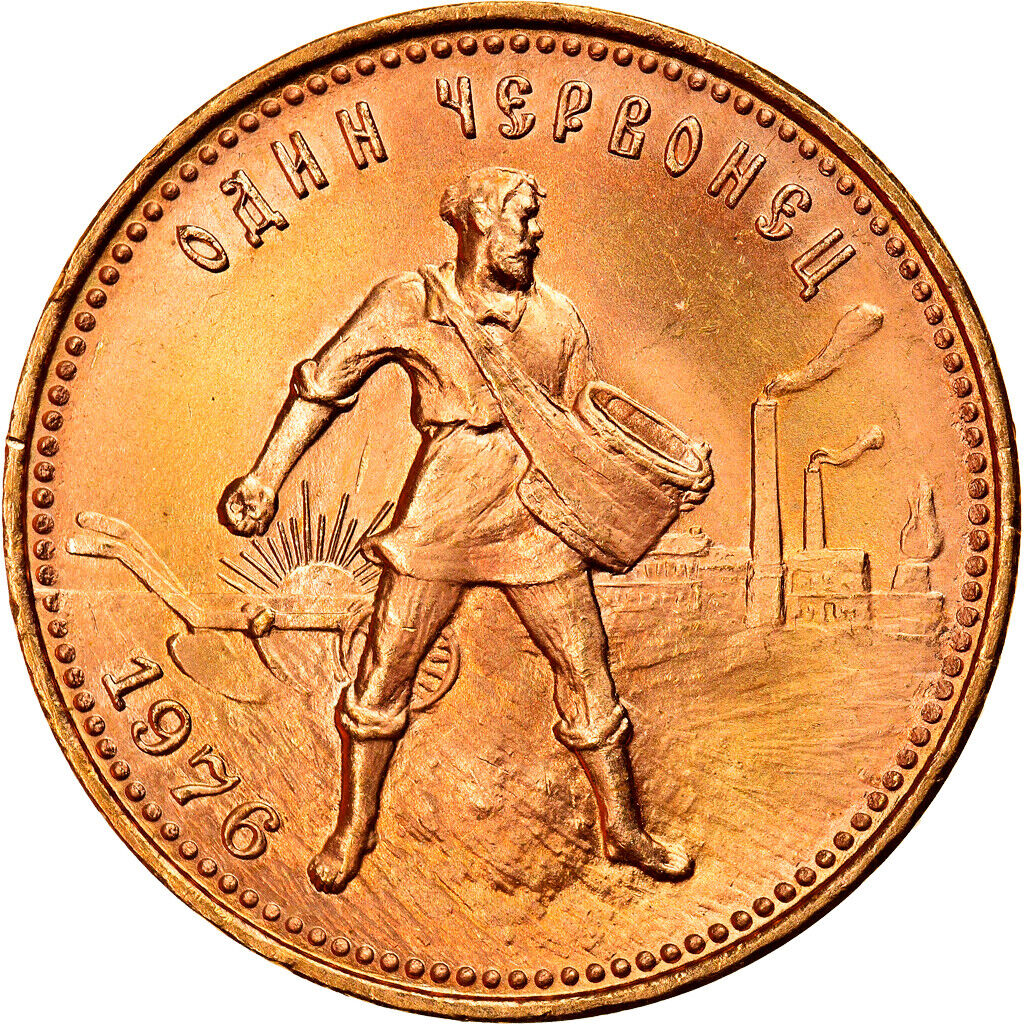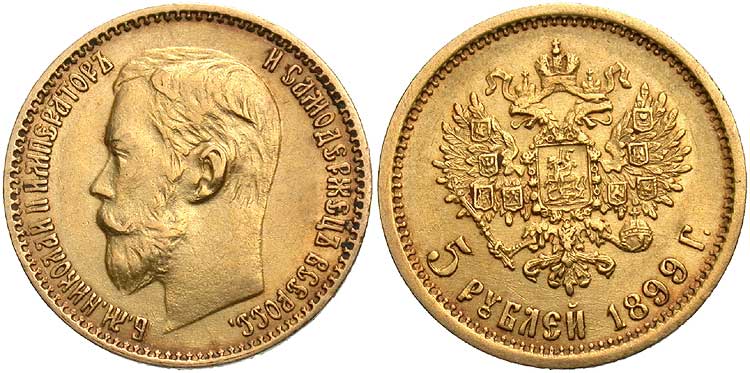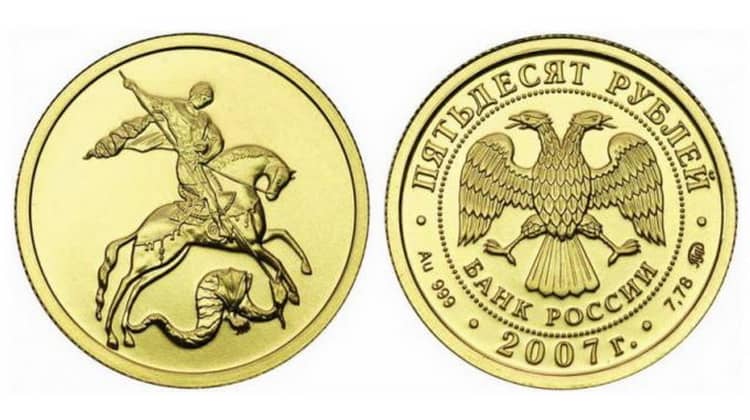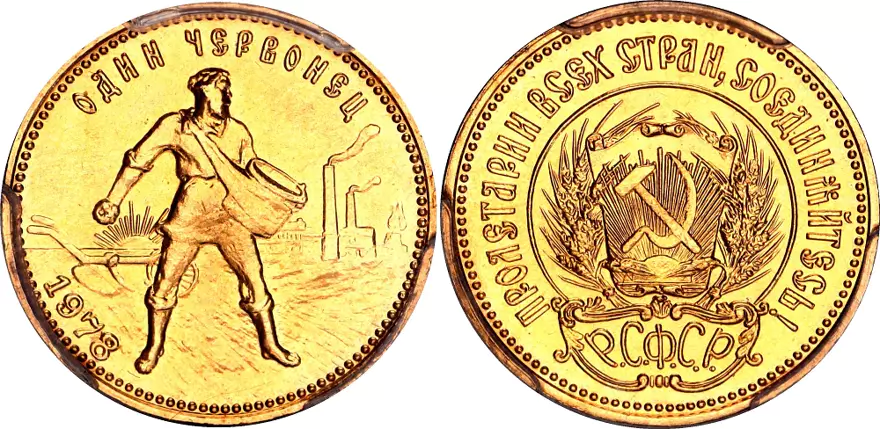Russia, with its rich and often tumultuous history, is renowned for its diverse array of gold (or silver) coins. This vast nation’s numismatic narrative stretches over centuries, from the reign of Peter the Great to the modern-day Russian Federation, each era leaving its unique imprint on the coins minted.
Collectors and investors worldwide have long been fascinated by Russian gold coins. Not only do they provide a tangible link to Russia’s captivating past, but they also serve as valuable investment assets. The appeal lies in their design, historical significance, rarity, and of course, the precious metal content, just like French gold coins, German gold coins or Australian gold coins.
This article delves into the world of Russian gold coins, guiding you through the most distinguished pieces that hold both monetary and historical value. Whether you’re a seasoned numismatist, a bullion investor, or a history enthusiast, these golden artifacts of Russia offer an intriguing journey through time and a worthy addition to any collection. From the golden Chervonetz and Imperial Roubles to the modern Saint George the Victorious bullion coins and vibrant commemorative issues, we’ll uncover the stories and the allure behind these stunning pieces. So, let’s embark on this fascinating journey into the heart of Russian numismatic history.
Gold Chervonetz Coins
The gold Chervonetz, also known as the 10 Rouble gold coin, was a currency unit of the Russian Empire and Soviet Union. The word “Chervonetz” is derived from the Russian word for “red”, possibly referencing the red seal used on fiscal documents.

The Chervonetz was originally a medieval coinage in Russia, but it gained international prominence in the early 20th century. The modern Chervonetz coin was introduced in 1922 by the Soviet Union and was minted in gold. It was intended to be used for international trade.
The coin has a diameter of 23mm and is made of .900 fine gold. The coin weighs approximately 8.6 grams, with the gold content being about 7.74 grams.
On the obverse side, the coin features the Russian coat of arms, while on the reverse side, it has a farmer and a worker, symbolizing the unity of agricultural and industrial labor.
Russian Imperial Gold Coins
Russian Imperial Gold Coins refer to gold coins that were issued under the Russian Empire, which lasted from 1721 until 1917. The most prominent gold coins from this period are the 5 Rouble and 10 Rouble coins.

- 5 Rouble Gold Coins: These coins were minted from 1897 to 1911 during the reign of Tsar Nicholas II. They’re made of .900 fine gold and weigh about 4.301 grams, which results in a gold content of approximately 3.87 grams. The obverse of the coin features the profile of Tsar Nicholas II, and the reverse side has the Imperial double-headed eagle.
- 10 Rouble Gold Coins: These coins were also produced during the reign of Tsar Nicholas II. They’re made of .900 fine gold and weigh approximately 8.6 grams, yielding a gold content of about 7.74 grams. The obverse shows a portrait of the Tsar, and the reverse side also features the Imperial double-headed eagle.
There are also other lesser-known denominations and commemorative coins from the Imperial era. The value of these coins today depends on several factors, including their gold content, their condition, their rarity, and their historical significance.
Saint George the Victorious Gold Bullion Coins
Saint George the Victorious Gold Bullion Coins are modern gold bullion coins issued by Russia. These coins have been minted by the Central Bank of the Russian Federation annually since 2006.

These coins are available in different denominations including 50 Roubles (weighing 7.78 grams, with a gold purity of .999), 100 Roubles (weighing 15.55 grams, with the same gold purity), and even higher denominations. The exact specifications can vary slightly from year to year.
The obverse of the Saint George the Victorious Gold Bullion Coin typically features the double-headed eagle, the symbol of the Russian Federation, along with the coin’s denomination and the year of issue. The reverse of the coin portrays the image of Saint George on horseback, slaying a dragon.
As gold bullion coins, the Saint George the Victorious coins are generally bought and sold at a price close to their intrinsic gold value, rather than any numismatic (collector’s) value. However, older or rarer editions might carry a premium in certain markets due to their collectibility.
Russian Gold Commemorative Coins
Russian Gold Commemorative Coins are special-issue coins minted to commemorate significant events, anniversaries, or figures in Russian history and culture. These coins can range widely in their design, denomination, gold content, and the number of coins minted, making some of them quite rare and valuable to collectors.

One example of a Russian Gold Commemorative Coin is the 1977 issue celebrating the 60th anniversary of the October Revolution. This coin was made of .900 fine gold and weighed 15.55 grams.
Another example is the series of coins issued to commemorate the 1980 Summer Olympics in Moscow. These coins came in several different designs, each celebrating a different sport, and they were minted in both silver and gold.
There have also been numerous coins issued in recent years to commemorate various events, such as the 2014 Winter Olympics in Sochi, or notable historical figures, such as famous Russian authors and tsars.
The value of these coins depends on many factors, including their gold content, the number of coins minted, the condition of the coin, and the significance of the event or person being commemorated. In general, coins that are rarer or in better condition will be more valuable.
Russian Zodiac Gold Coins
The Russian Zodiac Gold Coins are a collection of commemorative coins issued by the Central Bank of the Russian Federation. The series comprises 12 coins, each representing one of the zodiac signs: Aries, Taurus, Gemini, Cancer, Leo, Virgo, Libra, Scorpio, Sagittarius, Capricorn, Aquarius, and Pisces.

Each coin in the series generally features a depiction of the relevant zodiac sign on one side and the double-headed eagle emblem of the Russian Federation on the other. The exact design, weight, and gold purity of the coins can vary depending on the specific series and the year of issue.
These coins could be considered both as investments (due to their gold content) and collectibles (due to their unique designs and limited mintage). The value of these coins is likely to be influenced by a variety of factors, including the spot price of gold, the coin’s condition, and demand among coin collectors.
